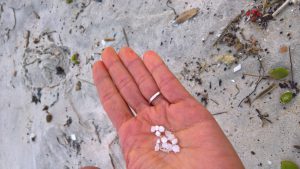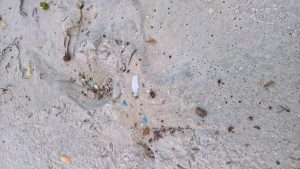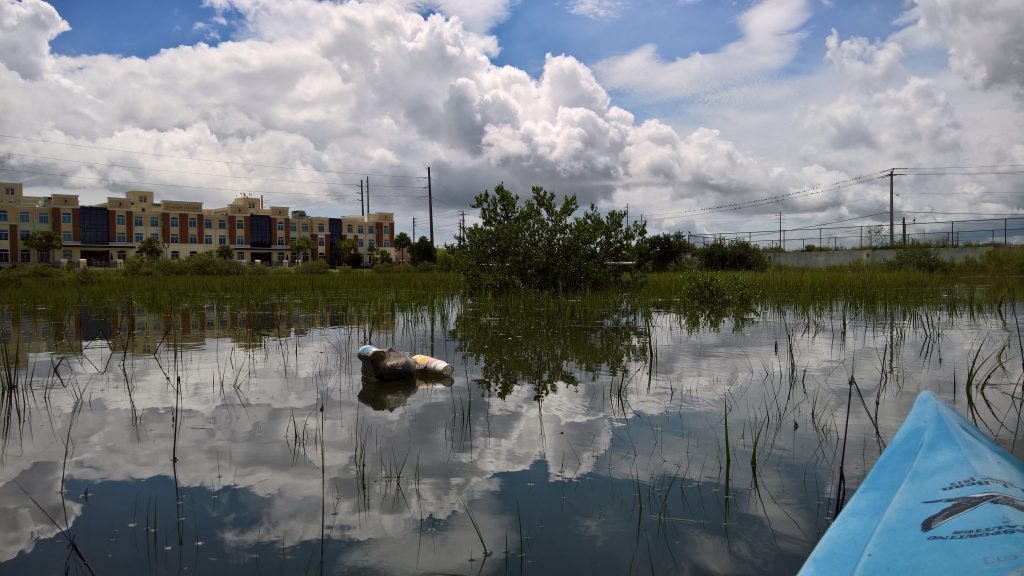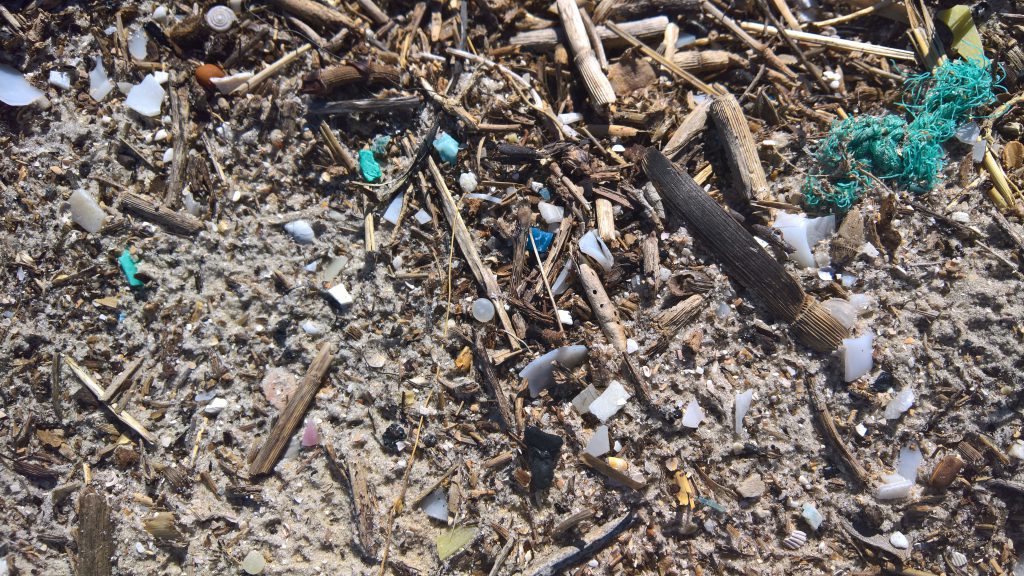
It’s been devastating to those who have had their homes flooded by the tidal surge from the recent hurricane. The storm has left much erosion on the beach, as well. Anastasia State Park beach has been forever altered. As usual when storms of Matthew’s force pass us, the old inlet tries to wash through to Salt Run. On my walk last week to observe the changes, I noted even more very small pieces of plastics, especially, along the thick wrack line in the newly cut area where the inlet tried to wash through. It’s piled thick for three miles along the remaining single dune line.
As normal for this time of year the past few years, the first wrack line near the water, I observed nurdles and endless amounts of less than 5mm pieces of plastics (microplastics). The microplastics are in numbers too abundant to ever count or clean up. Under the all sargassum weed left scattered on the beach remains tons of microplastics that I’ll photograph more next weekend. The spring tides next year will wash some of this back out to the sea and some will be buried as the winter winds approach. The secret of the hidden plastic will again persist in the North Atlantic Gyre unseen. I’ll continue to take my photos and observe the movement of the microplastics this fall and winter.
Below is a link to a few photos and a video taken along the shoreline. There is so much microplastic in the video that I stopped pointing out. It goes on for miles. What I point out first is a nurdle. These pieces aren’t piled up like in the dune line, but provide an idea of what washes in and out with the tides daily.
Click here to view photos.
Click for video.




